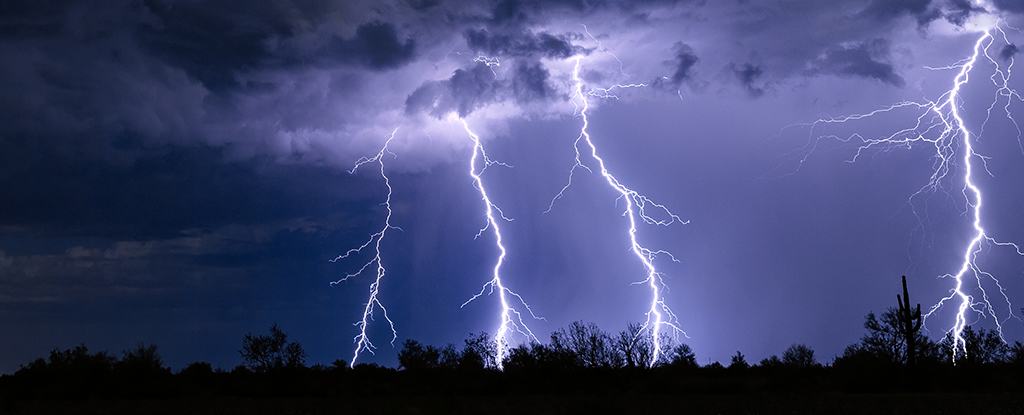
Most meteorites from Mars are just a few hundred million years old, and likely come from relatively recent volcanic events such as the eruptions on the largest volcano in the solar system, Olympus Mons.

Scientists are seeking to confirm that a black rock discovered in Morocco in 2018 departed Earth's pull for outer space, only to return to it like a prodigal child.

A lightning bolt has produced a fascinating type of phosphorus material - a close match for calcium phosphite (CaHPO3). We have never seen this material occur naturally on Earth – minerals similar to it can be found in meteorites and space.

A Martian meteorite that crashed in Morocco 11 years ago contains a vast diversity of organic compounds, which could help researchers discover if Mars could have hosted life and provide important clues about Earth's geological history.

The structure, an interlocking form of graphite and diamond, has unique properties that could one day be used to develop super-fast charging or new types of electronics, researchers say.

The Winchcombe meteorite is an extremely rare type called a carbonaceous chondrite and is thought to date back to the beginning of the solar system. It is rich in water and organic matter.

A new study finds that Earth's water may have come from materials that were present in the inner solar system at the time the planet formed - instead of far-reaching comets or asteroids delivering such water.

Scientists have found naturally occurring superconducting materials in extraterrestrial objects for the first time, discovering superconductive grains embedded inside two distinct meteorites that crash-landed on Earth.

A NASA scientist analyzed the age of the Yarrabubba meteor crater in Australia and found it to be 2.229 billion years old, making it now the oldest crater currently known.

A meteorite that crashed into Australia back in 1969 contains interstellar stardust dating back some 7 billion years, predating the formation of Earth by 2.5 billion years. The discovery offers a snapshot of the conditions that existed before our solar system.

The discovery of Metallosphaera sedula - the bacteria that eats meteorites not only invites speculation on how terrestrial life could survive off world, it offers insight into how early biology could have received key nutrients through space rocks.

New research by a team of UK scientists has located the site of the massive impact that took place in Scotland 1.2 billion years ago. Roughly one billion years ago, Earth experienced a higher rate of meteorite impact than it does today.

Geologists in France and Italy have spotted what appear to be organic molecules from outer space in 3.3-billion-year-old rocks in South Africa, according to a new study.

An international team has discovered a 31-km wide meteorite impact crater buried beneath the ice-sheet in the northern Greenland. This is the first time that a crater of any size has been found under one of Earth.

Planetary Resources and 3D Systems today showcased a model of part of a spacecraft from meteorite metals found in Argentina. The model was today showcased at CES in Las Vegas.